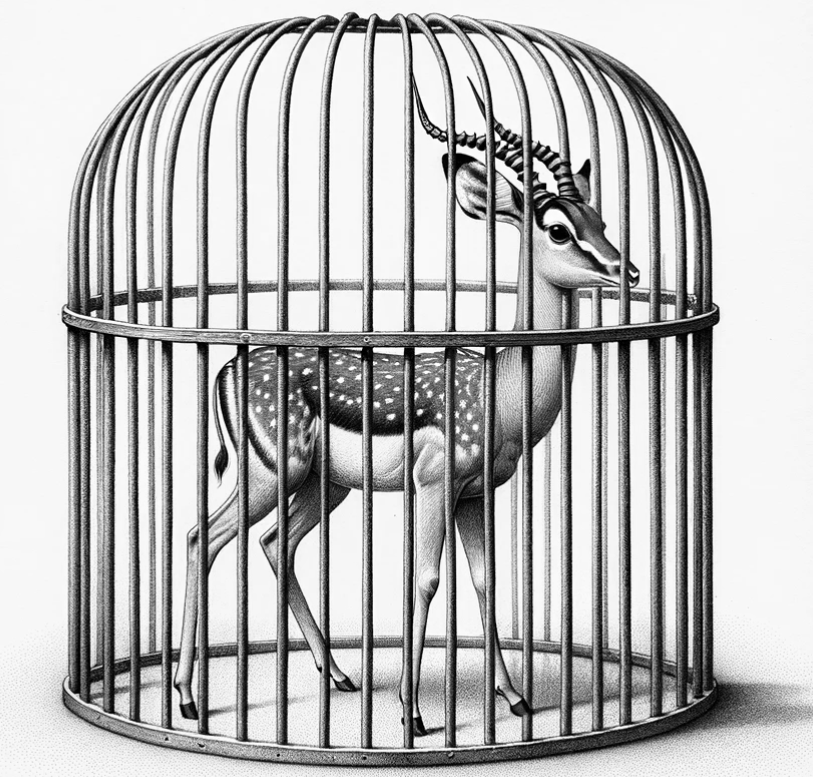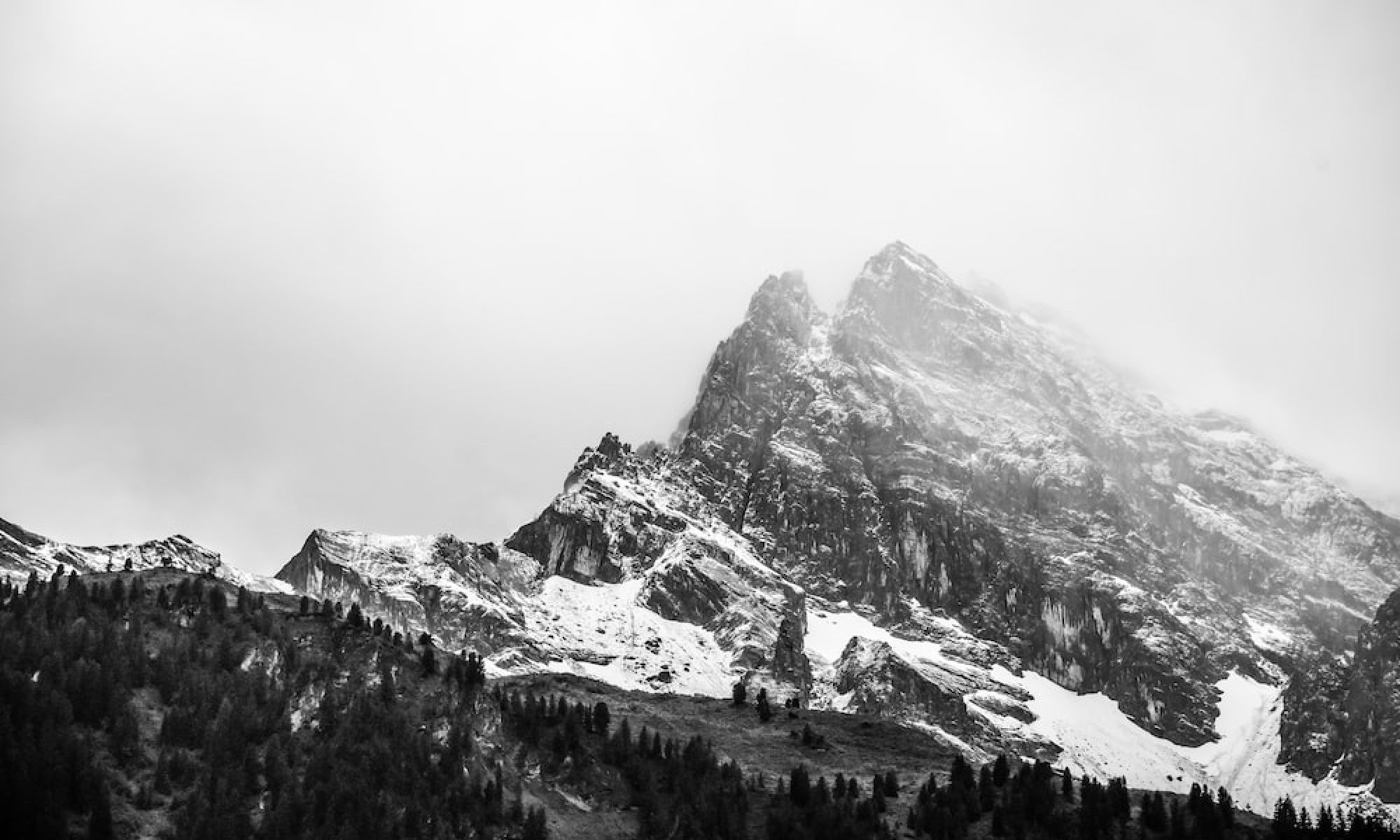The impala is an incredible athlete. The animal is capable of running effortlessly at 55 mph and can jump three times it’s own height. This is what it was made to do.
While a cheetah has a difficult time catching one of these incredible animals on the open plains, if one has already been captured, the requirement for keeping it contained is minimal.
The impala, despite it’s physical prowess, is unwilling to jump to a location it cannot see. Therefor, the animal will remain caged with only a three or four foot fence. There is no convincing it of it’s capability that will push it to break these limits. No reminding it or reasoning with it. It simply will not jump.

Risk and our Imagination
The impala does not jump for two reasons :
- He cannot handle the unknown risk beyond the fence. He will not accept a jump he cannot see.
- He has no imagination to project what is on the other side of the fence. His mind is too small.
If you read some of my posts before, you know that I enjoy the topic of risk and understanding how the mind works around it. If you were to understand just one thing about how humans process risk, I would hope it would be the following.
Unlike the impala, you and I have the ability to imagine. However, just like the impala, we have no tolerance for jumping a fence we cannot see the other side of.
The facts : There is NO WAY to see over the fence when we are talking about future events. It’s impossible.
The human mind hates this. So what does it do?
It creates projections. We project into the unknown using our past and our imagination. This can be a very powerful tool. Especially when we are correct. However, when we are not, it can put a person into a false reality of their own fiction. They are now trapped by a new fence. One they feel they know what is on the other side of but it’s nothing more then a figment. An illusion.
The Twisted Mind
Nobody wants to think that the reality they perceive may not be fully real. We would all much rather double down on our false beliefs then to approach them and try to reckon with them. I understand if what comes next is a bit troubling.
In the unknown space, the space we cannot see, we imagine or project a sense of what is there. Let’s talk about a few ways the mind wrestles with this in order that we might un-twist our minds and learn to admit what we cannot see.
Confirmation Bias
“I expect the future to be ______ , therefor I will find evidence for reasons it should be ______ ” The best way to guess is to guess based on what has happened before. We will use past events that are unlinked to this event to confirm what might happen next. We may also look around and see similar events. While we might build a strong case for what is ahead, there is truly no way to know. We do this positively and negatively. “I lost last time, I’ll lose again”. Remember, each new future event is new and unconnected to the last.
Preparation Bias
“I came prepared for the future, therefor it should favor me”. This is about as absurd a thing as you or I have probably ever heard. Especially when said like this. However, this is often the way the mind handles that blank space on the other side of the fence. There is no amount of readiness that the future respects. It will be what it will be.
Action Bias
“I don’t know what is next so I will make sure I do enough actions to make it how I want”. This is a very common bias to see when a trader is struggling. The overtrading madman is just another normal human being struggling to understand the reality of the unknown. While actions are required to bring about things we want to accomplish, we are not masters of the universe and must accept that most of what happens to us is outside of our control. Ride the waves.
Information Bias
“I have the right information about the past, therefor I have a better sense of the future,” While you may have a solid handle on what has happened, you just cannot know what will happen. Often times, we look back over our charts and say “If I had done X” or “I should have noticed Y”. While that might be true, we are looking at charts seeing both the fence and where the jump landed. You cannot look at charts this way if you want to remain sane. You can only look at charts for good fences to jump over based on the risk of the jump, not on the result.
Contagion Bias
“Since I took time to make my charts look nice and applied the latest tools, I now have confidence to jump the fence!”. Slow down cowboy. You can see in this little example that chart color and graphic displays do nothing to cast for you a future action that is favorable. Sure, you can look at things on your charts that are “cutting edge” but the reality is, they are never so cutting edge that they cut into the future. No matter how high-tech your tools are, they remain on this side of the fence. This is more superstitious then it is “edge”.
Cognitive Dissonance
“GME is a trash stock and a garbage company and there is no way I would trade that”. In this case, the trader has soothed their assumption of loss by looking down their nose at an opportunity. This may be one of the most common issues traders face. “The stock is up too much, I never chase”. This is not a prudent trading strategy as much as it is fear of jumping over an unknown fence.
Association Bias
“We’ve already moved down so far, I can’t imagine selling here. It would be better to look for longs. The squeeze is going to be a face ripper”. You’ve seen something happen before. We’ve all seen a good squeeze. We’ve all also seen a solid rug pull. Reality is, it’s far more likely for a thing to keep moving the way it is then for it to turn. (trends exist in randomness) As a response to the fear and pain associated with jumping a fence into a low of day rally or high of day failure, we associate this moment with a random moment of the past. We project that moment into this one as a response to fear.
Omission Bias
“I can’t take a loss on a trade I don’t take”. While this is true, you sure can’t win one either. We tend to feel good about missing negative outcomes. This overrides how bad we feel about missing good outcomes. Since pain of loss registers higher then thrill of winning or even the pain of missing out, it’s common for a trader to be passive on all the “painful looking trades” and then finally begin to act once price “looks good”. This never leads to good outcomes. It is far better to commit to jumping the fence regardless when your conditions are met. Let the law of large numbers guide you.
Forecast Illusion
“This is my year. I am going to make a million dollars scalping the indexes this year”. Do you know the percent of predictions that come true? It’s stupid low. No matter how much we believe in our system or ourselves, there is no “name it and claim it” power in trading, markets or any other future event. Yes, it helps to be positive, create a big view and some big goals. The truth is, declaring them as fact into the future is just another form of self-securing. Just another warm blanket in the face of an unknowable future.
I don’t know.
These are three powerful words.
They don’t feel like it but, if the next time you are in a tricky spot where you or someone around you wants to have a solid answer about something yet to be, give them a try. “I don’t know”.
What happens in this moment, when we use these three words? We become open to whatever might be there in that unknown place. We are also forced to protect ourselves in case of a bad outcome. Risk gets managed. Humility increases and instead of forcing ourselves onto whatever comes next, we simply enter into it with acceptance.
For me, this is the most interesting thing.
Yes, it’s fun to guess what might happen. Maybe build out a little thesis. Once you understand that “wait and see” will tell you the truth better then any hairbrained guess, you learn to live in a way that accepts those random new outcomes as possibly the most interesting thing that could happen.
Don’t tell me.
Each one of the above bias’s limit what you see. Instead of creating accuracy of what is next, they instead limit our access to what is possible. Your mind is limiting what opportunities you are capable of participating in as a form of self-protection from what it cannot know.
I refuse to impose such limits on myself and my future no matter how comforting they might be in this moment. If you know what happens next, don’t tell me.
I don’t want to know. I will find out when it get’s here.
Funny enough, I’ve taking the same approach in my trading. You don’t know what will happen next, neither do I. My job is simply to practice fearless jumps without guessing the outcome.
